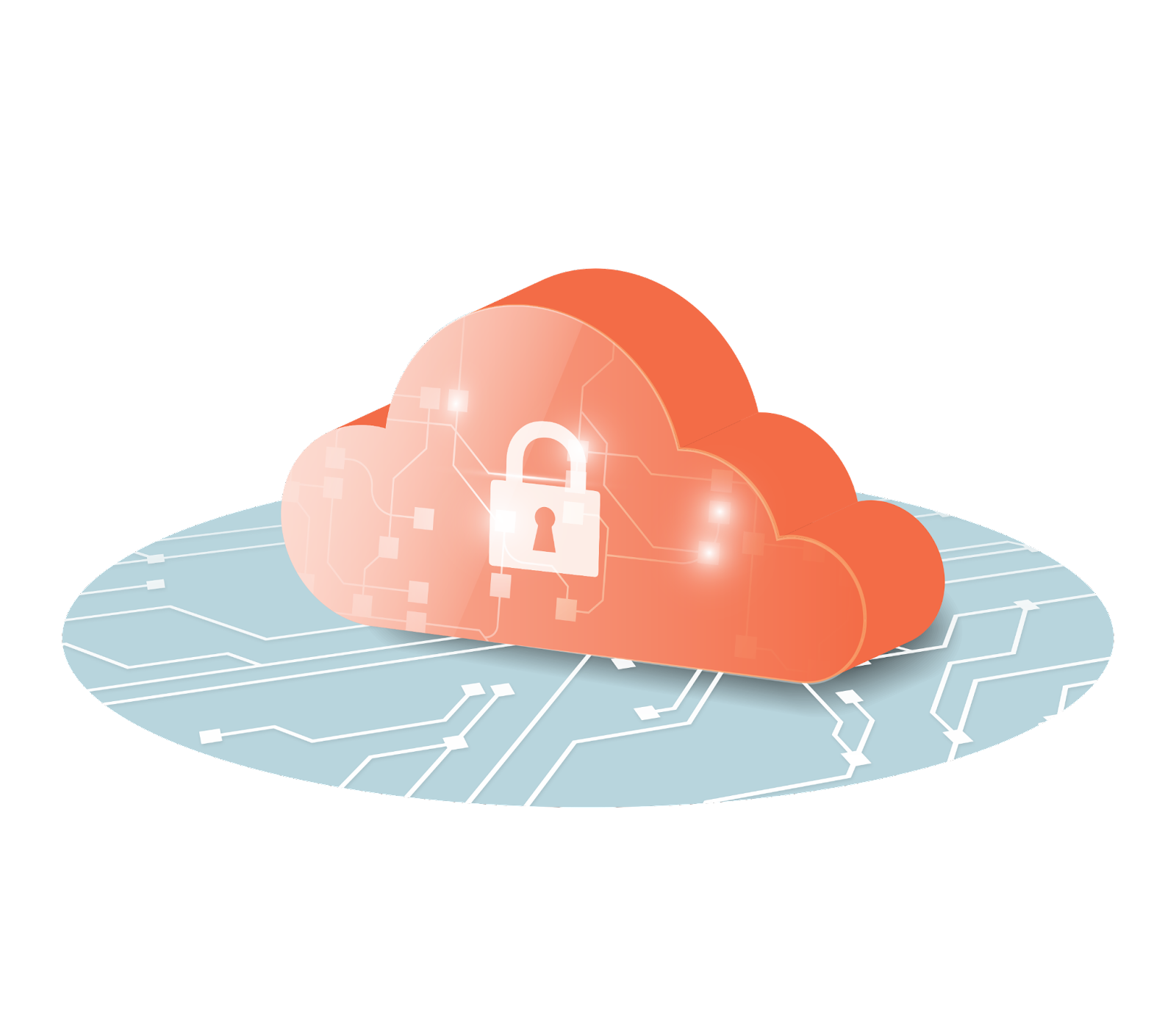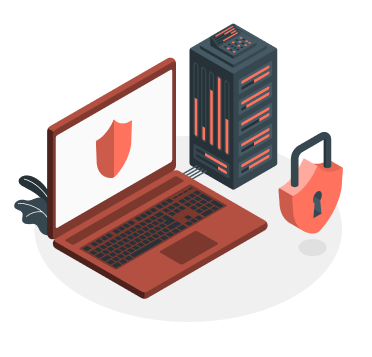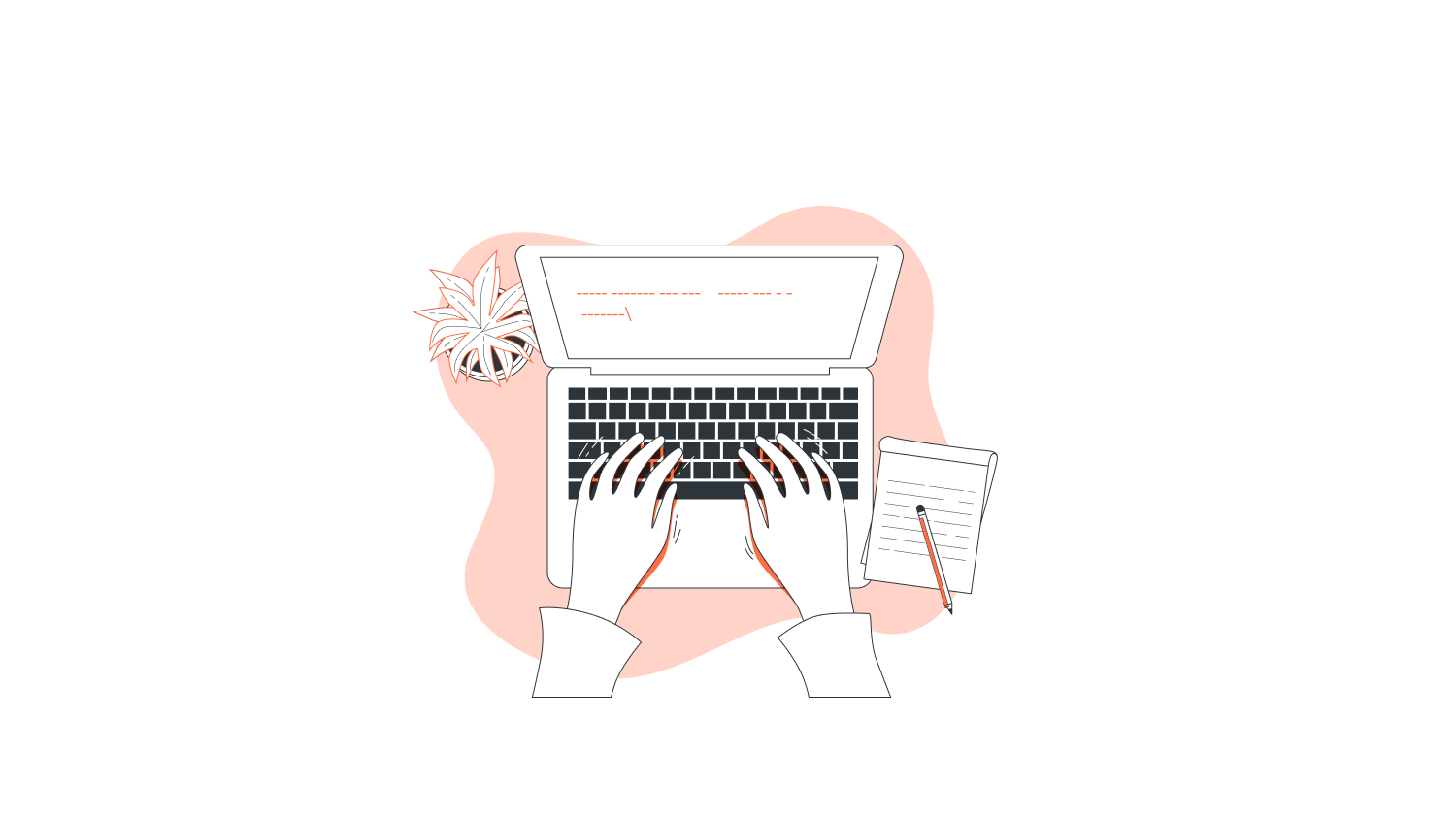As a business, you need data to predict the market and target user trends, identify relevant opportunities, and market your business to the right audience. You might already have data centers manned by expert data analysts.
And your analysts might be using data analytics tools to amass and collate large blocks of data and convert them into numbers that make sense to you. These numbers help you understand your consumer behavior, which will help you stay two steps ahead of your competition.
So we can all agree that data is important! And as such, sensitive data must be secured against loss or malicious usage.
In this blog, we’ll take a closer look at cloud security, its relevance in today’s business world, and the most common cloud security challenges businesses face. Don’t worry, we won’t leave you with half the data!
We’ll also help you identify the security measures and solutions you can implement to combat the security challenges in cloud computing!
Once you reach the last sentence of this blog, you’ll not only know the security risks of cloud computing but also how to prevent cloud attacks.
What is Cloud Computing and Cloud Security?
First things first! What exactly are cloud computing and cloud security? Let’s get our basics clear!
Data surely runs the business world now.
In fact, if you want your business to grow exponentially and flourish, you would have already put together a data analytics team.
Your analysis might use data analytics tools to amass and collate large data blocks and convert them into numbers that make sense to you. These numbers help you understand your consumer behavior, which will help you stay two steps ahead of your competition.
Well, when you do the above on the cloud, that’s cloud computing.
Technically put, cloud computing is the on-demand availability of computer systems – powerful machines with data storage and computing power – managed without direct involvement by the end users. You won’t have to invest in expensive and space-consuming on-premise supercomputers.
Now, let’s say that data is the currency that powers your business.
But what if that currency is stolen? Or lost? Or destroyed accidentally or on purpose?
Cloud Computing Security Threats
Much like currency in the real world, your data can get stolen, lost, or corrupted. This would bring your business to a standstill or leave it open to malicious threats.
And like we have banks and wallets for our real-world currency’s security, we can implement data security measures that mitigate data loss and data breaches. And cloud security comes into the picture when your data is cloud data!
In simple words, cloud computing security or cloud security refers to a broad set of technologies, policies, cloud controls, and cloud applications that businesses use to protect their sensitive data. They overcome cloud security challenges by strengthening the security measures around their virtualized IPs, applications, services, and the infrastructure associated with their cloud computing practices.
Why is Cloud Security Important?
Cloud security practices ensure that your data and applications are easily accessible to the right authorized users without subjecting your business data to cloud computing cyber security challenges.
With the help of cloud computing security provided by any of the top SaaS security companies, you can ensure that your business is at the peak of its performance while also being safe from cloud security concerns. Here are a few ways cloud security helps your business:
- Your business will always be safeguarded against security breaches and malicious threats.
- You will be able to streamline and manage remote work without much hassle.
- You’ll always have a contingency plan to ensure disaster recovery for your business data.
- It’ll ensure that your business practices comply with legal governance policies.
- It ensures that there are no weak links in your organization that could lead to potential data leaks.
Top Cloud Security Challenges and How to Combat Them
Now, let us take a quick look at the top cloud security concerns in cloud computing and their solutions.
- CHALLENGE: Breach in Data Security
Data breaches remain one of the top cloud computing security challenges that cloud computing service providers and their end customers face.
It goes without saying that data breaches are serious threats to any organization’s sensitive data and can greatly damage that company’s financials and reputation. It can also lead to regulatory actions as data breaches result in the loss of the company’s consumers’ personal data as well.
It is important to take every possible security measure to avoid data breaches, as they could spell doom for a business and bring down its overall market value.
SOLUTION:
There are several cloud security solutions you can adopt and implement to ensure that your company’s sensitive information is secure and protected against any and all data breaches, such as:
- You can define the value of your data and calculate the impact of a possible data breach to put contingency strategies in place.
- You must protect all your data with encryption to keep your user data secure.
- You must develop an air-tight incident response plan tested against hypothetical security incidents.
- You must set roles and permissions that regulate data access to users.
- You need to implement policies and rules that ensure the safe and secure removal and deletion of data that becomes obsolete.
- CHALLENGE: Improper Planning Before Adopting Cloud Security
To paraphrase a saying we’re all too familiar with, if you fail to plan your cloud security adoption, you plan to fail in its execution.
Many companies get excited by the prospect of adopting cloud security and jump headlong into the adoption process without considering planning the proper architecture. Creating strategies to execute the transition to cloud security is also important.
And what about creating awareness among your customers? Before adopting cloud security, you need to educate all your stakeholders about the advantages and threats that come with it.
SOLUTION:
Your customers need to be aware of the threats they could get exposed to when their data is on the cloud in order to avoid being victims of cyber attacks that can result in loss of money and reputation or even legal lawsuits.
Here are a few things you need to keep in mind while planning your migration to cloud security:
- Plan your cloud security architecture in such a way that it complements your business requirements and your long-term vision.
- Create and deploy an architecture framework that caters to the needs of all stakeholders.
- Make sure you have measures in place to monitor all data migration.
- Restrict traffic from sources and connections that are untrusted.
- CHALLENGE: Incorrect Setting Up of Assets
2. CHALLENGE: Incorrect Setting Up of Assets
(Banner content: Cloud assets must always be properly configured.)
Another major challenge that can occur when you adopt cloud security is the incorrect set up of cloud assets which are mostly used for storage purposes. You leave your cloud assets exposed to external attacks when you fail to set them up correctly.
And it’s not just the storage assets that need to be set up correctly. If you do not set roles and permissions to determine authorized access to the cloud assets you set up, that also leaves your cloud environment vulnerable to threats.
SOLUTION:
Make sure to avoid cloud misconfigurations due to improper change control. You can do this by automating your change control to support quick changes in on-demand and real-time cloud environments. Other points to keep in mind include the following:
- Screen and monitor all your data that is accessible on the world wide web.
- Prepare a fail-safe and well-tested incident response plan by defining your data value and the adverse effects of data loss.
- Make sure all stakeholders follow the policies pertaining to change management, release, and testing of data.
- Make it a best practice to have mock contingency response drills and risk assessments at frequent intervals.
- Spread awareness to all stakeholders, including third-party contractors and end users.
3. CHALLENGE: Unsecured APIs and Other Interfaces
The user interfaces and APIs that facilitate customer interaction with the cloud services you offer are areas of high risk. It is your responsibility to ensure that all such user interfaces are secure in order to avoid data breaches and malicious attacks.
SOLUTION:
There are numerous ways to manage the cloud security risks that can arise due to insecure APIs and other user interfaces, chief among them being:
- Making it a point to implement rules for great API hygiene.
- Avoiding the recycling of API keys to make the cloud environment more secure.
- Using standard APIs with open frameworks that are subject to continuous monitoring.
- Following the industry’s best practices when it comes to designing and developing APIs.
4. CHALLENGE: Inadequate Cloud Visibility
Cloud visibility simply means the ability to have a detailed birds-eye view of all your cloud-related activity. With all the information pertaining to your cloud security accessible from a single touchpoint, you will find it easy to spot security threats. You will also be able to monitor the performance of your cloud deployments and optimize the same.
When enterprise admins are faced with limited cloud visibility, it poses a number of challenges. One such problem is the development of shadow IT, which is when employees use apps that are not permitted by the IT admin but go undetected due to poor cloud visibility. It goes without saying that such apps make your whole cloud environment vulnerable to external threats and malicious attacks by hackers.
In short, limited cloud visibility leads to diminished governance and lack of awareness and will likely result in a breach of data security in the long run.
SOLUTION:
There are a number of measures you can take to ensure that your cloud visibility is clear and your employees do not inadvertently leave your sensitive data open to attacks:
- You can educate employees on the importance of using only IT-approved and regulated applications.
- You can create and implement a cloud visibility effort that covers all aspects of your cloud services and security.
- You can insist on mandatory training for all your personnel and other relevant stakeholders on the best practices and acceptable usage of cloud assets.
- You can implement a hierarchical system of approvals so that only authorized personnel have access to sensitive data.
- You can monitor your cloud activities and employees and conduct risk assessment exercises at frequent intervals.
- You can ensure that all your cloud-related activities are documented properly and detailed logs are maintained that account for all employee activities.
5. CHALLENGE: Identity and Access Management Problems
Another one of the common cloud security issues faced by organizations can be traced back to IAM (Identity and Access Management) problems. Suppose you do not take the proper steps to protect your user credentials or neglect using automated cryptographic keys and password rotation strategies. In that case, you could expose your cloud activities to security issues.
While conducting inventory, tracking, monitoring, and managing the sheer number of cloud accounts, you need to watch out for provisioning and de-provisioning problems. In addition, you also need to keep an eye out for zombie accounts, too many admin accounts and users bypassing IAM controls, as well as challenges with defining roles and privileges.
SOLUTION:
It is not easy to monitor and control the large volumes of cloud accounts linked to your company and its data, but you can mitigate IAM-associated risks with a few simple yet effective steps such as:
- Make sure you implement measures to protect credentials properly and also enforce a 2F (two-factor) verification process for your user accounts.
- Use automated keys and strong passwords that are changed at regular intervals.
- Enforce stringent checks and IAM controls for all your cloud users.
- Analyze your database regularly and remove unwanted or unused credentials, accounts, and access privileges every time an employee is relieved of duties.
- Ensure that every key account holder and stakeholder is appraised of his or her roles, responsibilities, and permissions.
6. CHALLENGE: Insider Threats and Associated Risks
So far, we’ve mostly been focused on eliminating external threats. But there are internal threats – intentional or unintentional – that you need to manage when it comes to cloud security.
Your present employees, or former employees, or any stakeholder or ex-stakeholder for that matter, can be seen as a potential weak link if they are negligent in their duties or lack the necessary awareness about cloud security issues.
If employees are not careful, they open up your cloud environment to a host of risks that can ultimately lead to data breaches, data loss incidents, downtimes and errors, all of which can result in lost customer loyalty and revenue.
SOLUTION:
Now, this type of cloud security threat is not your responsibility alone. Rather, it is a shared responsibility model that must be handled by all your stakeholders, including your employees and end customers.
Here are a few ways to mitigate insider threats and human errors that can lead to leaked or stolen data and cloud misconfigurations:
- You can increase the awareness among your stakeholders with cloud security training sessions.
- You can deploy strategies to track, monitor, and fix servers that are misconfigured.
- You can set roles and permissions for lead admins to restrict access to critical systems.
- You can set strict multi-tenancy guidelines.
- CHALLENGE: Cloud Account Hijacking Possibilities
Cloud account hijacking is a major cause of concern for organizations that have migrated to a cloud environment. It can lead to the willful disclosure or accidental of privileged cloud accounts that are key to the administration, operations, or maintenance of a cloud environment.
Such data breaches can happen as a result of malware attacks such as phishing and credential stuffing. It can also arise because of credentials that are improperly protected, bug-filled codes, and more.
You need to keep in mind that account hijacking is not simply resetting your password and locking you out of your cloud account, and it can have far-fetched consequences.
SOLUTION:
Cloud account hijacking is a serious threat and places your company and its sensitive data at the mercy of others with probable malicious intent.
- Implementing highly sophisticated Identity and Access Management controls.
- Ensuring that you employ strategies such as strong passwords that are subject to frequent rotation.
- Creating a business continuity plan to help you avoid business disruptions in case of a contingency situation.
- Making sure that production and non-production environments are kept separate and key accounts are given extra protection.
- CHALLENGE: Waterline and Applistructure Collapse
Now, let us look at how cloud security is affected if the metastructure (also known as the waterline) collapses. Waterline or metastructure is basically the line of demarcation that separates cloud service providers and their customers. If this collapses, then you can imagine the chaos that would ensue!
Waterline collapse can lead to data loss, business disruption, and legal and financial trouble for your organization.
SOLUTION:
There are multiple ways to ensure that your cloud security controls are good enough to curb metastructure collapses, some of which are:
- Include policies that ensure that you always have cloud visibility for all the activities of your users.
- Conduct regular penetration testing to analyze your cloud environment’s strengths and weaknesses.
- Have a tried and tested contingency plan in case of any operational disruptions caused by an inevitable waterline collapse.
- Ensure transparency and open communication with your end users, and ensure everyone is on the same page.
How Can NeoITO Help?
Our experts can guide you with consulting services on the best practices to tackle cloud security challenges while building your business.
Now, if you want to power your business growth with data, meet your business needs in real-time, and improve your operational management’s overall productivity, resource availability, and cost-effectiveness, then NeoITO is among the top cloud service providers you can trust.
And, of course, you will face multiple issues in cloud computing. Still, with the right planning, carefully thought-out solutions, and strictly implemented policies, you can put your cloud security concerns to bed!
FAQ
Why is cloud security a challenging aspect for most businesses?
Cloud security must not be taken lightly, as a breach in your security can lead to the loss, damage, or theft of your sensitive data.
Now, one of the most commonly faced challenges in cloud computing is data accessibility in the cloud. As your cloud infrastructure is shared between multiple users, you need to ensure that the right authorized user gets access to the data that is relevant to them.
What are the 3 biggest cyber security challenges?
Cyber security threats can refer to any possible malicious attack on an individual or a business that tries unauthorized access, disrupt digital operations, or damage data unlawfully.
Ransomware attacks, IoT (Internet of Things) attacks, and cloud attacks are among the top three biggest cyber security challenges faced by businesses. They are closely followed by phishing attacks, blockchain, and cryptocurrency attacks, and software vulnerabilities.
How is cloud security maintained?
Cloud security can be implemented by bringing in a set of regulatory rules for your cloud operations. Once implemented, it can be maintained by following strict protocols of adherence to the cloud security measures you have in place.
Encrypting your data is a sure-shot way of ensuring that your cloud security is maintained and your data is protected at all times.




